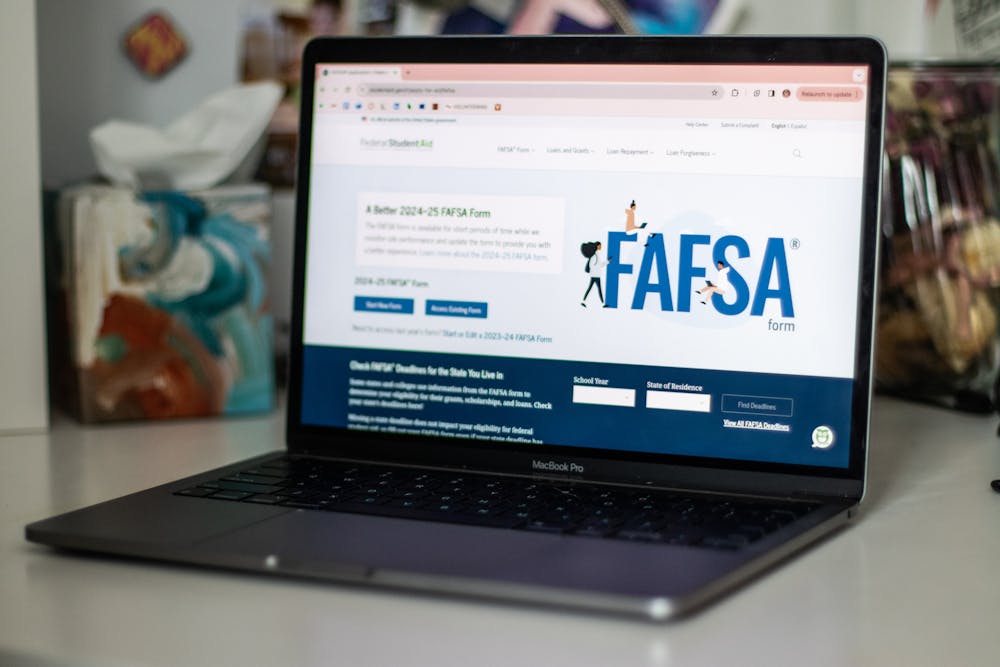The Free Application for Federal Student Aid (FAFSA) has recently undergone several significant changes – the most since the introduction of the Common Financial Aid Form in the Reagan era, according to the U.S. Department of Education website.
This redesign was created via the FAFSA Simplification Act and Fostering Undergraduate Talent by Unlocking Resources for Education (FUTURE) Act.
Ria Shultz, the Assistant Director of the University of New Mexico Center for Financial Capability, said that these laws should make the FAFSA easier to access, leave users with fewer questions and provide better clarity on what information students need to provide.
“More people should be qualifying for financial aid that might not have been able to qualify in the past,” Schultz said.
The FAFSA calculates student eligibility for grants, loans, scholarships and work-study opportunities. Grants are highly sought after because students are not required to repay them. The Federal Pell Grant is awarded based on financial need; the changes to qualify, Schultz said, are important to understand.
This change is the result of replacing the Expected Family Contribution (EFC) with the Student Aid Index (SAI). The EFC was a precise amount that a student’s family would expect to pay, whereas the SAI functions more like a scale and is an “indicator of where your need stands,” Schultz said.
In previous years, eligibility for financial aid was determined by the EFC, which factored in academic year, enrollment status and cost of attendance. For the 2024-25 FAFSA, eligibility will be determined by the SAI, which factors in academic year, enrollment status, cost of attendance, as well as family size and the Federal Poverty Level, based on the student and their contributors’ information.
The inclusion of more factors and adjustment of formulas should make the Federal Pell Grant available to an additional 610,000 students, according to the Federal Student Aid website.
FAFSA’s Simplification Fact Sheet defines a contributor as any person “who’s asked to provide their information, consent and approval to have their federal tax information transferred automatically from the IRS into the FAFSA form, and signature on your FAFSA form.”
Dependent students have always been required to provide parent information on their FAFSA, but the new definition of a contributor would also require independent students to include information about their spouses, according to the Department of Education’s website.
The Department of Education is also changing how parents with multiple college students will have their FAFSA calculated. The goal is for families with multiple kids in college to receive more aid, Schultz said.
Another change, according to the Department of Education’s website, is that contributors will now be required to create their own FSA account to provide information on their student’s FAFSA. Although students are required to have a Social Security number – except in special circumstances – to create their account, their contributors may create an account without one.
Get content from The Daily Lobo delivered to your inbox
Once a student’s FAFSA is submitted, contributors will receive instructions on how to access their Submission Summary. This serves the same purpose as, and will replace, the Student Aid Report to document student FAFSA answers and show aid eligibility, according to the Department of Education’s website.
Institutions will now be required to “make more information about (Cost of Attendance) publicly available to students and their families,” FAFSA’s Simplification Fact Sheet reads. This includes information about loan fees and miscellaneous student costs.
The FAFSA Simplification Fact Sheet states that financial aid professionals – someone who works in a school's financial aid department – have been given “additional flexibility in adjusting a student’s eligibility for federal student aid, which is known as professional judgment, due to special or unusual circumstances.”
The deadline for the FAFSA cycle has also changed. While the FAFSA cycle typically opens in October, the 2024-25 cycle opened on Dec. 31, 2023. The federal deadline to complete the form is June 30, 2025; however, the UNM Financial Aid Office has released a FAFSA priority deadline of March 1, 2024.
The UNM Financial Aid Office will be offering free workshops from Jan. 8, 2024 - March 31, 2024 to assist new and returning students with completing their 2024-25 FAFSA. The UNM Center for Financial Capability will be offering students one-on-one consultations with their trained and tax-certified staff members.
As the priority deadline to complete the application draws near, Schultz said, it is important for students to remember that they need the FAFSA in order to get any kind of financial aid at all.
Arly Garcia is a freelance reporter with the Daily Lobo. They can be reached at culture@dailylobo.com or on Twitter @DailyLobo






